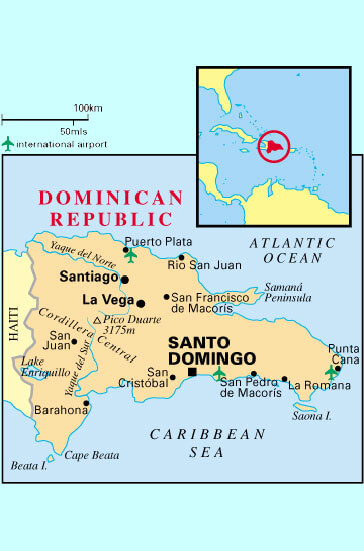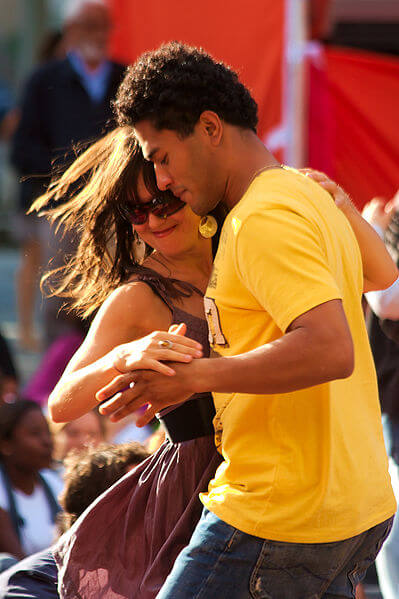Dominican Republic
The Dominican Republic occupies the eastern two-thirds of Hispaniola and has a history of slavery behind its music. When the Indigenous populations were decimated by both Europeans and European diseases in the 15th and 16th centuries, African slaves were brought in to work on sugar plantations. Plantation life was brutal and revolts were not uncommon. As a result plantation owners banned all forms of community gatherings and drumming, which they feared would allow slaves to communicate across long distances.
The most popular dance in the Dominican Republic is the Merengue. The merengue is native to the Dominican Republic and was generally only popular in the lower classes until the 20th Century. Traditionally, Merengue is played by a three-man group called a perico ripiao or pri-prí. The instruments consist of a small drum called a tambora, an accordion, and a güira, which was originally a gourd scraped with a forked stick. Since the 1970s, Merengue has increased in speed and the dance steps have become less formal.
Contemporary Dominican music is widely varied. Genres include British and American influenced Dominican rock, Merengue Hip-House, Merenrap, and most popular, Reggaeton. Dominican reggaeton is a mixture of American hip hop, reggae, and elements of latin music.

